St Non’s Well, St David’s, Pembrokeshire, Wales
In the middle ages, when Christianity still flourished as a living, embedded tradition in both Britain and Ireland, pilgrimage sites were almost too numerous to count. Some, of course, were more important than others. Britain’s most significant pilgrimage centre was Canterbury, but coming a close second - or perhaps first, if you’re Welsh - was St David’s in Pembrokeshire. The birthplace and shrine of the patron saint of Wales, still visited today in its strangely remote cathedral on the clifftops, was such an important site that it was said that two pilgrimages to St David’s were the equivalent of one to Rome.
Many pilgrims from Ireland made the trip across the sea, which was probably easier and quicker than trying to get there by road from the south of England. This week, I am following in their footsteps, venturing outside of Ireland for the first time in this series to visit the holy well at this great Welsh Christian site.
St David’s is a rum place. Technically it’s a city, a city being defined in old Christian Britain as a town in possession of a cathedral. St David’s is certainly in possession of one of those, and a real Gothic beauty it is:
You’ll notice, though, that its surroundings don’t really scream ‘city’ at you. This is because it sits in the middle of the countryside, near the sea in Pembrokeshire, South Wales. There is a village nearby with one street in it, which contains some cafes and tourist shops and bike hire places, but that’s it. This makes St David’s officially Britain’s smallest city.
But it is also one of the country’s oldest and most spiritually significant cathedral settlements. Founded by David as a monastic site in the sixth century, the reputation of its monks was respected by kings from Alfred the Great to William the Conqueror, and the shrine of St David became a key pilgrimage site for the faithful across the island and further afield.
The present cathedral was constructed in the twelfth century. There’s a good deal of Romanesque architectural splendour on view inside. Here is a carved stone sanctuary, with the crucified Christ illuminated beneath a carved wooden ceiling:
The cathedral does not stand alone, though. It is embedded in a wider landscape of Christian sites. Pilgrims would have visited and venerated the relics of St David as the centrepiece of their trip, but they would have visited other places nearby too. One of them, reached by means of a winding footpath along the clifftops, was St Non’s chapel:
This, as tradition would have it, is the place where St David was born, in the middle of a lightning storm on a bare and wild clifftop. This chapel was later built on the site, and is dedicated to his mother, St Non. Non - or by some accounts Nonnita - was a pious Christian woman who unfortunately caught the eye of a rapacious local king. When she refused his advances, he raped her - and the birth of David was the result. Non herself became a nun (‘Non’ is sometimes said to be a corruption of ‘nun’ and not her real name) and was a widely-loved saint, whose own relics were venerated along with her son’s.
Of course, when St David was born in the middle of a lightning storm on a wild Welsh clifftop, something else happened too: a holy well sprang up on the spot. It is still there today:
Like the wells of Ireland, St Non’s well was traditionally visited by those in search of healing. They would pray to the saint for help, and would apparently often receive it, as one visitor recorded in 1811:
The fame this consecrated spring had obtained is incredible, and still is resorted to for many complaints. In my infancy, as was the general usage with respect to children at that time, I was often dipped in it, and offerings , however trifling , even of a farthing or a pin, were made after each ablution, and the bottom of the well shone with votive brass.
Plenty of people visit this well today, just as they visit St Non’s chapel, and indeed St David’s itself. But after months of trudging around wells in Ireland, I could feel on my visit that there was something different about the place. Yes, it was a holy well - technically, at least. But there was something missing. The statue of St Non that keeps watch over her waters gave me the answer as to what it was:
What do you see there? Or rather - what do you not see? That’s right: offerings. There are none. At well sites in Ireland that statue would be hung with rosaries, scapulas and crosses, and studded with photos of people whom prayers were sought for. There might be baby shoes or covid masks or old socks tied to a nearby tree. The whole thing would be a bit of a mess, because it would be alive. Here? Well, in true British tradition people have been throwing coins into the well. But you could see that in a wishing well in a pub car park:
The truth is that, while St David’s is a beautiful place, full of history, it feels somehow … dead. Maybe I’m being unfair. I only visited for a day. But I’ve seen enough living religious sites to know what they look - and feel - like. In Ireland, and even more so in places like Romania or Greece, a site like this would not only be hung with offerings, but would often be full of pilgrims lighting candles or kneeling in prayer. Here? Just tourists like me with hiking boots and cameras.
This is not an observation unique to St David’s: it’s the norm throughout Britain. I’ve only realised the depth of the problem since I moved out of the country and began to understand what others still had - and what we once had here. While I was in Wales last summer, for example, I also visited St Govan’s Chapel, a tiny stone chapel which was once a saint’s hermitage, carved into a cliffside. It reminded me of a cave hermitage I had visited in Romania, that of St Teodora of Sihla. But while St Teodora’s cave was alive with dancing candles and stern praying women, and was watched over by an attentive Orthodox monk, St Govan’s is an empty shell visited mainly by tourists having picnics on the beach below.
Or take Iași cathedral, in the east of Romania, which I visited last year. Iași is a modern town with a university and a Starbucks and all the other detritus of the 21st century, but while the cathedral at St David’s feels hollowed out and secularised, Iași is thrumming with spiritual life. When you visit St David’s you can see the rather sad, empty stone shrine that the saint’s relics would have lain in before the ‘Reformers’ arrived to smash them. In Iași, people still queue around the block to venerate the relics of St Paraskeva, and the queue is made up of both young and old. I tried to imagine anything like it ever happening in my homeland, and it was impossible.
Britain, almost uniquely amongst the many countries I have visited in my life - at least those in the ‘old world’ - feels spiritually dead, and this in turn feels like the root cause of the many problems that plague the land today. I don’t say this with any relish: this is my homeland, and I wish it were different. But since I have become a Christian, in particular, I have come to see just what has been lost there. Much of this is the legacy of the inaptly-named ‘Reformation’, which in Britain led to a frenzy of iconoclasm and sacrilegious violence. The ransacking of the monasteries, along with the centuries of spiritual tradition they held, the destruction of shrines like that of St David, the beheading of statues, the whitewashing of churches, the banning of festivals, the filling-in of holy wells: the wonder of medieval British Christianity will never be regained. And this was all done by Christians. It’s hard not to resent it sometimes.
It is strange, though, that none of it came back. Romania, after all, suffered under an especially brutal form of communist atheism, which involved the mass demolition of churches, the effective banning of the faith for years, and the torture and murder of countless Christians. Yet Parasekeva is still there, while David is long gone. Britain’s attempt at purifying the faith saw it swallowed instead by ‘secularism’, and it is now giving way to a ragbag of pseudo-spiritualities which is rising to claim the sacred landscape of the island. It’s a sad thing to see, and to feel. You probably need to leave the place to understand it. Perhaps you need to be Christian too. The place is a shadow of what it was - and what it could be.
Since I don’t like to leave these Sunday entries on a low note, though, let me leave it on that one. Because in Britain, as in Ireland, that sacred landscape, though shattered and held in contempt where it is not simply forgotten, is still there, not so far below the surface. It wouldn’t take much for St Non’s well, for instance, to become a site of veneration again. Perhaps it wouldn’t take much more - just a national crisis or two, and they’re well on the way - for the British people to discover the ancient wonders of their true Christian heritage again, to peel away the New Age crud from its surface, clean it up and get to work.
It could be done. Saints, like springs, are always there, whether or not we choose to pay them attention. And eventually, when we do, sometimes - miracles happen.


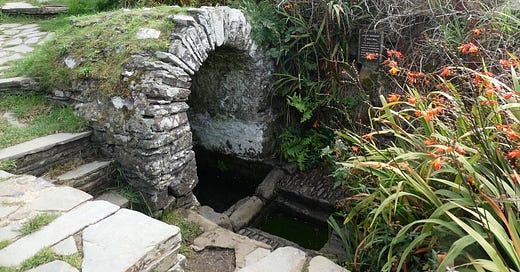



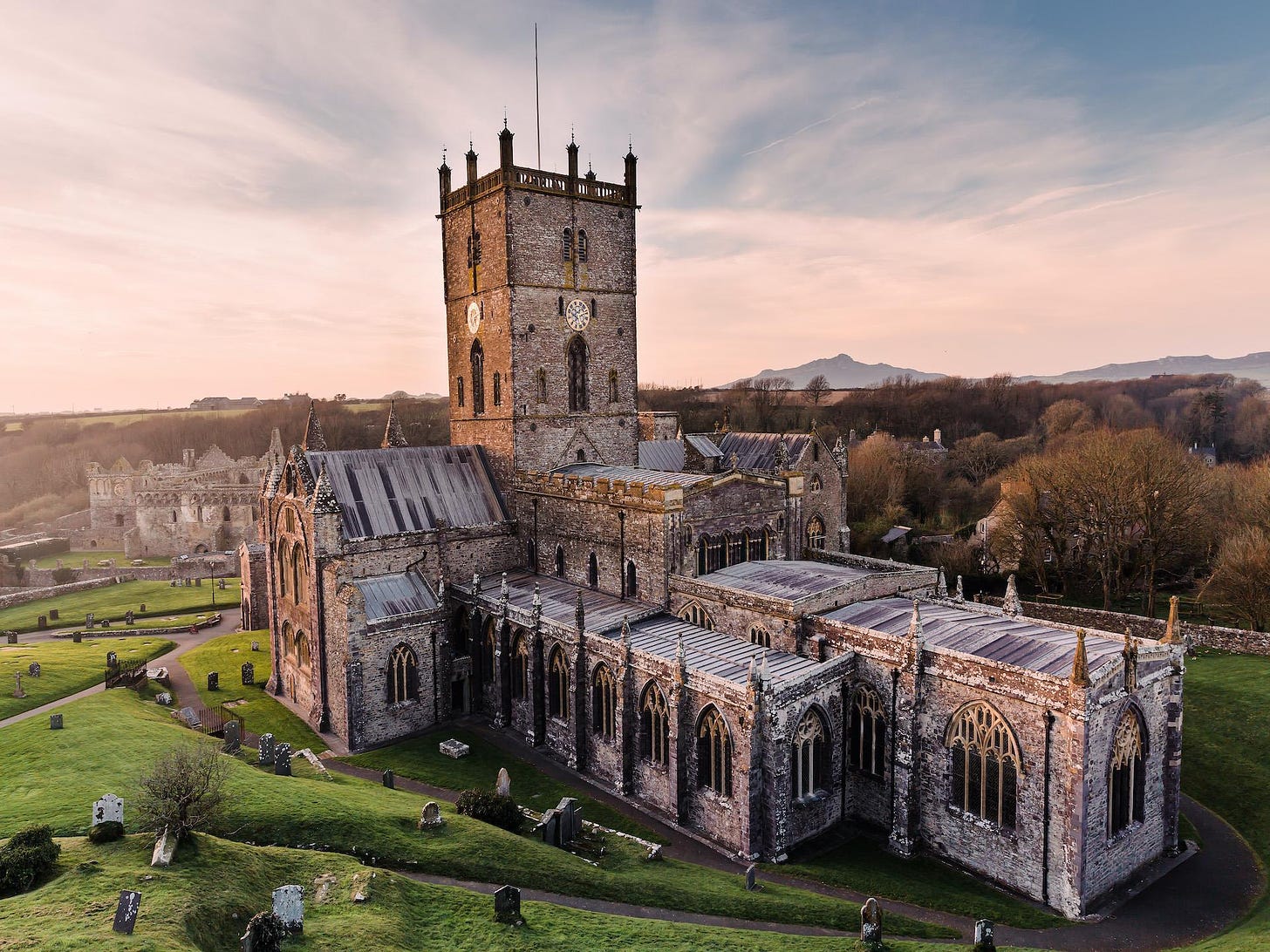
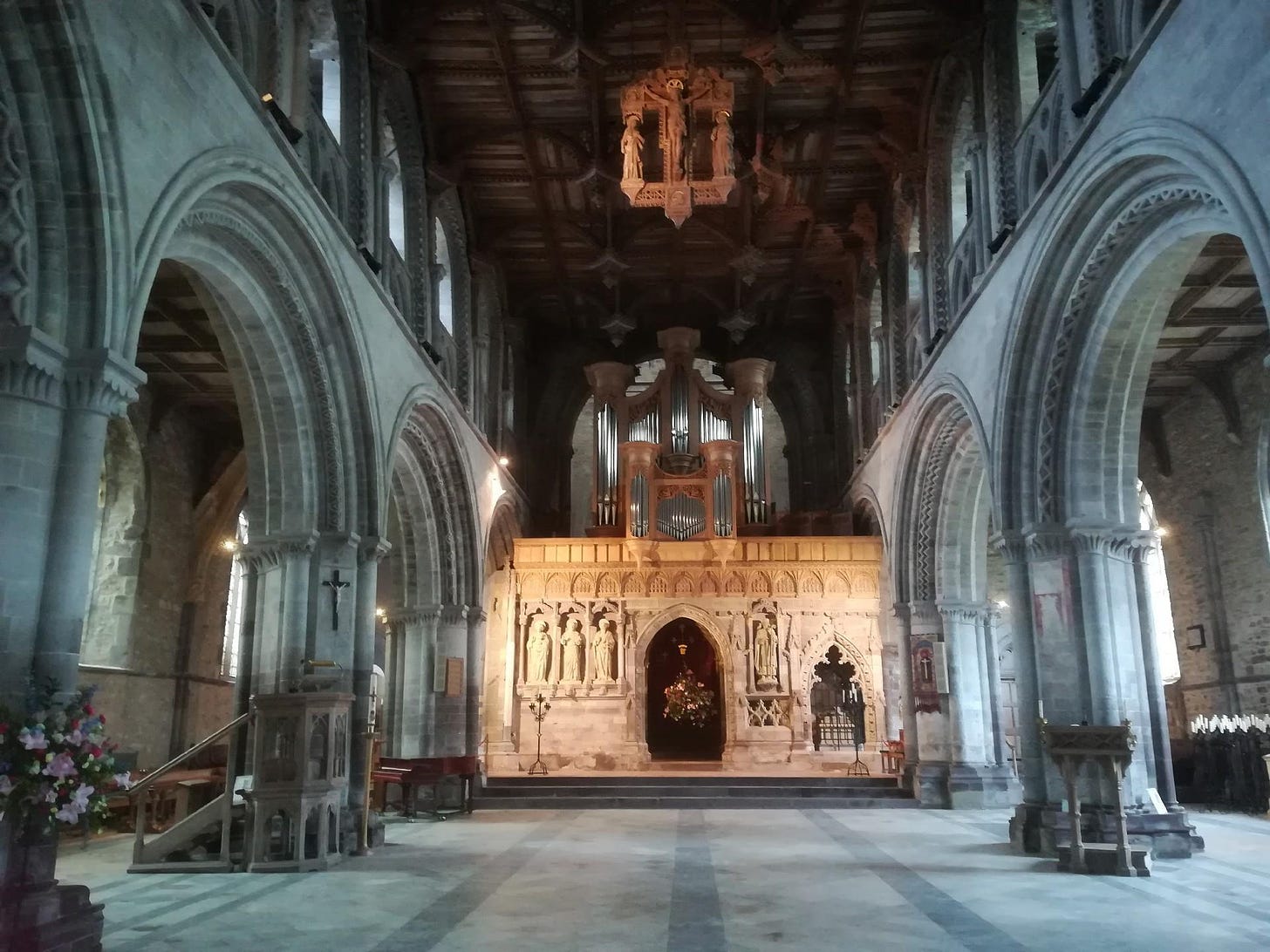

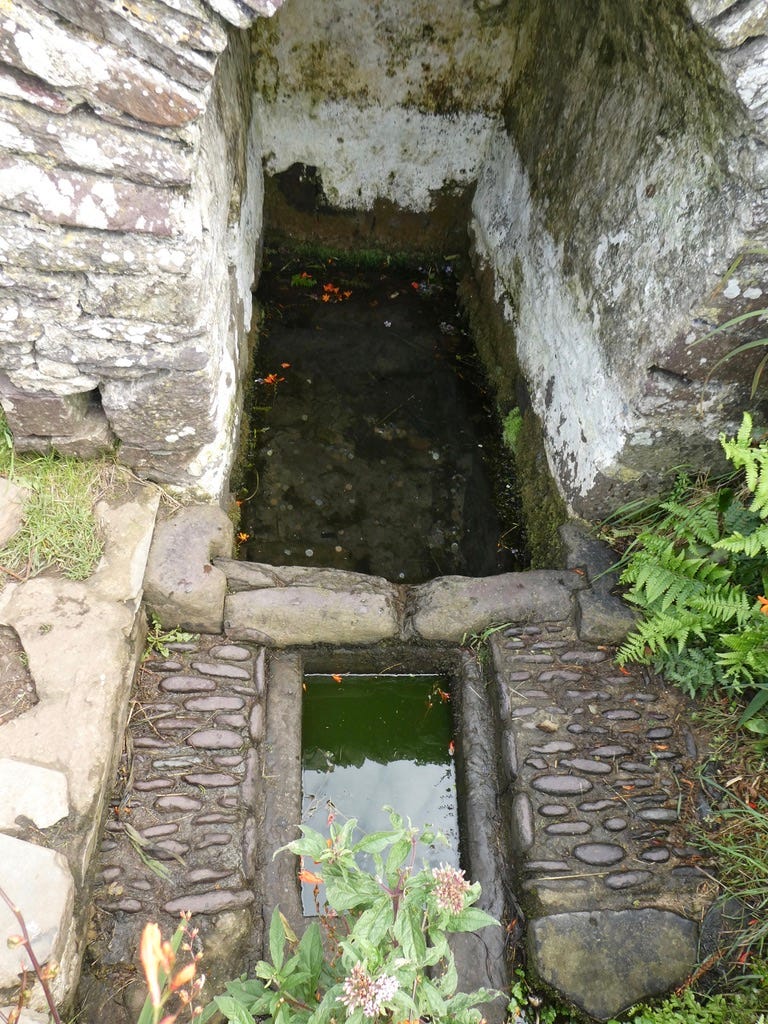
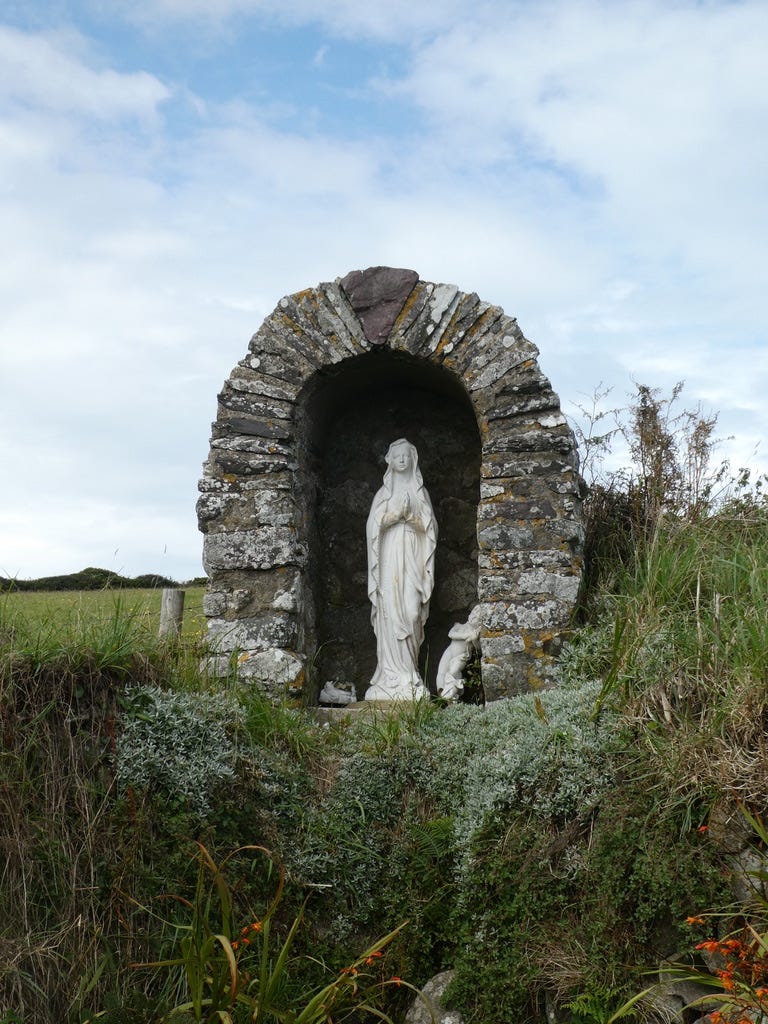

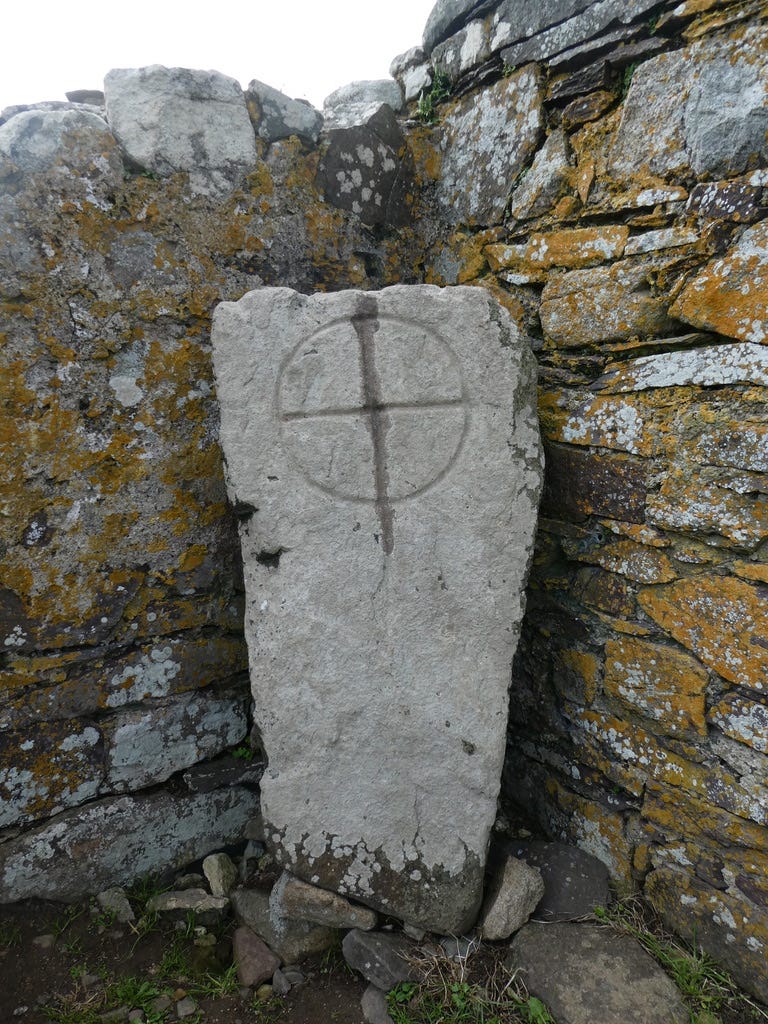
I am in Ponta Delgada in the Azores where I have been living for three years now, today I went at 6 am to a church, Igreja de Sao Jose, where people were singing songs around a figure of Christ that they call Christ of the Miracles, or Santo Cristo dos Milagres as there is a major festival of the same name here right now.
I came to this island from the U.K. because there is little faith or empathy left there now, the slow decline of faith that perhaps started in 1536 when Henry threw religious orders out of the U.K might be nearing completion. It was mirrored here by the dissolution of monasteries between 1832-1834, but people kept their faith alive in so many ways and empathy for others is still strong. It did however remove the rudder from the ship that we could call their society, which is something I am looking into, but something in these people keeps the candle burning, which makes it feel a lot better to be here than by the flickering flame in the U.K.
The time is right to light that candle again my friends x
Living in Cornwall we are blessed to see glimmers of the old magic. Some of the hundreds of holy wells and churches still have a sense of enchantment. I have been going to St Eunys well to pray since our son suffered with severe autism after vaccination. It hasn't cured him but gives great peace to share suffering with others in spirit at least.